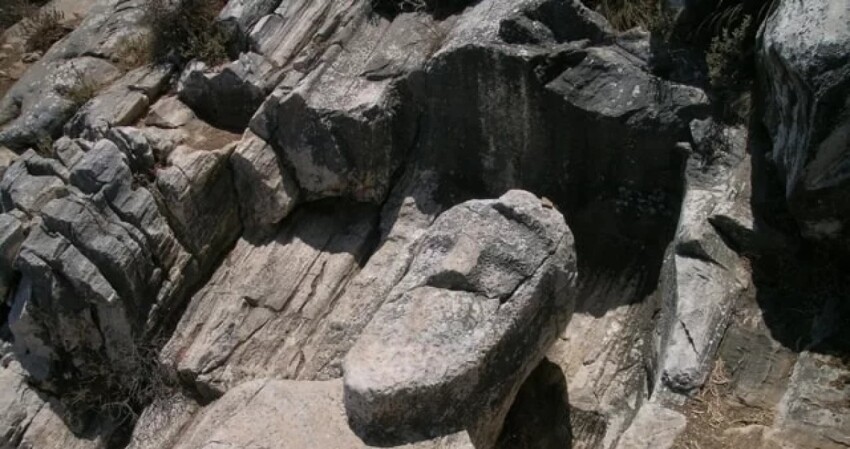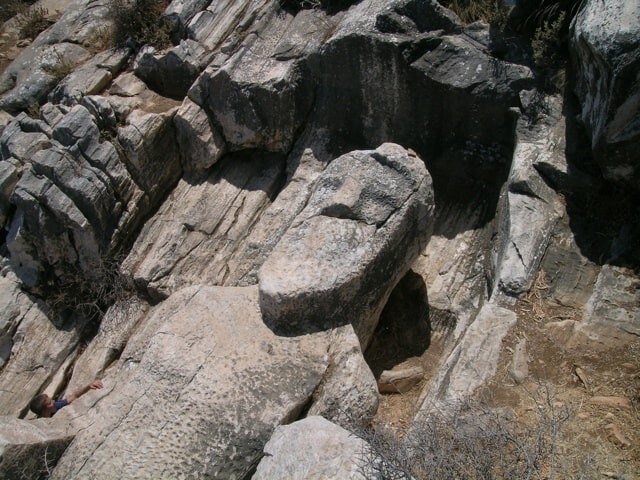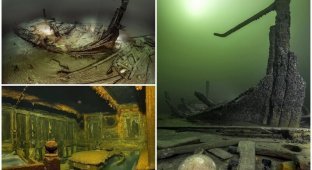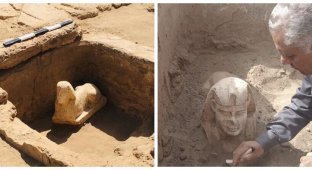The most ancient Dionysus is hiding on Naxos (4 photos)
An unfinished statue of Dionysus, 11 meters high, lying in ancient marble quarry on the island of Naxos, according to scientists, is one of the oldest statues of Greek gods that have survived to this day. 

One of the ancient marble quarries, which is believed to scientists, laid the foundation for the greatest art of ancient Greece - marble sculpture, - located near the coastal settlement of Apollonas on island of Naxos, the largest of the islands of the Cyclades archipelago in the southern parts of the Aegean.
Naxos is famous for its huge number of monuments from different eras, reflecting the cultural changes that took place in the Aegean region over the centuries due to its geology, history, size and location.
The road from Hora to the northern village of Apollonas is 37 kilometers. Just above the village of Apollonas is the quarry of Apollo, one of the rare quarries, the name of which has been known since ancient times.
On the slope of the former quarry, a huge unfinished 11-meter statue of Dionysus. Here you can also see numerous fragments of other unfinished statues, tools for sculptures, traces of incisors and indented surfaces.
Ancient Dionysus is an extremely large statue: it even slightly larger than the Colossus of Delian, a statue depicting the god Apollo, the largest marble statue ever erected in Greece, which was also delivered from Naxos. 
The monumental statue, despite being incomplete, looks extremely majestic. It's amazing that on an island in the middle of the Aegean Sea, in a location next to the tourist seaside village, in for 27 centuries, a recumbent statue 10.7 meters long and weighing 80 tons, in the same ancient quarry where it was originally created. She is called here "Dionysus of Apollonas".
On the top of the hill above the quarry there is an inscription "ΟΡΟΣ ΙΕΡΟΝ ΧΩPΙΟΥ ΑΠΟΛΛΩΝΟΣ" ("Holy Mount of Apollo"). It dates back to the 7th-6th centuries. BC and probably refers to the ancient sanctuary of god.
Since the statue is located near the village of Apollonas, earlier it was considered a statue of Apollo. The first to make this assumption Bondelmonte called it "the statue of Apollonis" in the 15th century. In 1840 researcher Ludwig Ross also called it a statue of Apollo. chi though Wilhelm von Massow identified the statue as Dionysus in 1932, She was called Apollo for a long time. 
Archaeologists have identified the type of giant statue as the kouros. Most of the kuros statues depict naked young athletes with hands on the sides. However, the kouros from Apollonas was clearly to become an image of an elderly man with a beard, with the right hand.
The figure is roughly carved, obviously in the first approximation, but the body, the head with beard and ears and the beginning of the hairline are quite distinct. The masons carved the hands into rudimentary rectangles, and started molding the feet, which rest on a pedestal with a height of 50 cm.
Archaic kouros were usually interpreted as depictions Apollo. Because of his beard, the kouros of Apollonos has been interpreted as Greek god Dionysus. Archaeologists believe that these statues were intended for installation on the roof of the temple, but in the end the ancient sculptors refused from them due to defects in the marble. The paradox in the case of this particular kouros lies in the fact that he was abandoned without even being cut out of the rock, although obvious there are no defects in the stone.
It is a monument of great value because it is located in natural environment and not in some museum, which helps the viewer to better appreciate the culture that developed on the islands in antiquity.






























